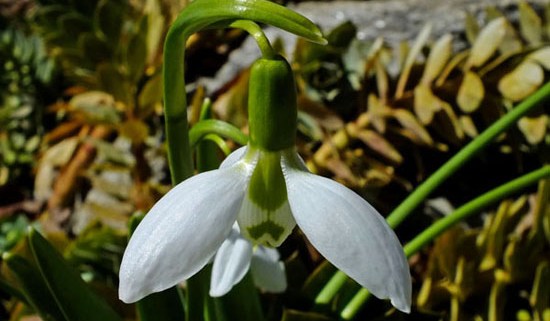Spring is evolving fast here in Ontario; Hepatica, Sanguinaria canadensis and Claytonia are flowering in our woods. Also, in some places blackish/purple beasties are erupting from the leaf mulch and growing with the speed of light – I am talking about the blue cohosh, Caulophyllum shoots :)
I wrote few times about Caulophyllum (referring in general to both C. thalictroides and C. giganteum) and its seeds, which are hydrophyllic and slow to germinate.
In this post I would like to bring to your attention two things:
The seeds offered up to this year were collected from a mix population of C. thalictroides and C. giganteum. Later in the season they are indistinguishable. C. giganteum is more desirable because has a deeper purple colour, purple flowers, and it gets taller. Depending on the luck, some may obtain C. giganteum seedlings.
This year the seeds of C, giganteum will be offered separate, from a localized population.

Caulophyllum giganteum in early spring

Caulophyllum giganteum, the shoots are coming up with the flower buds which open right away after few sunny days
Then, about germination: the seedlings are also appearing in my garden, and I can show two easy methods to germinate/grow it, without keeping around pots for 2-3 years until the seeds germinate.
- Sow the seeds into a compostable container buried into the ground (close to a large perennial, shrub) where you will water once in a while; cover with a mesh to discourage critters. A layer of leaves mulch can also be used in late fall, to mimic the natural environment.

Caulophyllum seeds sown in compostable container, which can remain in place

Caulophyllum seedlings, a bit hard to notice because of the colour
2. Sow the large seeds directly into the garden, also close to a large perennial or shrub, where you know the soil won’t be disturbed. In my picture the seedlings are growing now among Polygonatum buds.

Caulophyllum seedlings obtained by direct sowing in the ground
In a couple of years they can be dug up and planted at the desired place.
Stay tuned – Hepatica acutiloba and H. americana are in full flowering mode :)

























